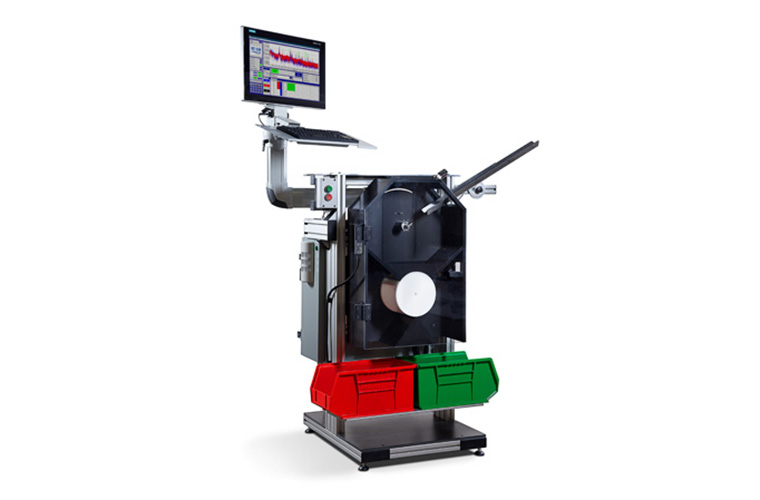Main Menu
- Home
- Product Finder
- Calibration Systems
- Calibration Services
- Digital Sensing
- Industrial Vibration Calibration
- Modal and Vibration Testing
- Non-Destructive Testing
- Sound & Vibration Rental Program
- Learn
- About Us
- Contact Us
 Producers of deburring, milling, drilling, and other bits that
rotate at medium or high speeds understand the risk of significant damage and severe injury from a weak braze joint crack propagating to failure while the bit is in operation. With traditional, subjective visual inspection or other traditional non-destructive
testing or non-destructive evaluation methods, it can be difficult or impossible to detect flaws such as incomplete braze infiltration, improper braze alloy, damaged or missing braze pellets, or missing braze paste.
Producers of deburring, milling, drilling, and other bits that
rotate at medium or high speeds understand the risk of significant damage and severe injury from a weak braze joint crack propagating to failure while the bit is in operation. With traditional, subjective visual inspection or other traditional non-destructive
testing or non-destructive evaluation methods, it can be difficult or impossible to detect flaws such as incomplete braze infiltration, improper braze alloy, damaged or missing braze pellets, or missing braze paste.
Conversely, these same methods may indicate a poor braze joint when in fact, mechanical testing of the same part shows the separation force is well above the required limit.
 Tooling bits, with or without braze joints, can be tested using NDT-RAM (Non-Destructive Testing Resonant Acoustic Method). NDT-RAM is able to provide an extremely fast, objective, whole
body indication of the integrity of the part on 100% of parts produced. Resonant frequency shifts caused by the structural weakness of poor sinter brazing are readily detected. Performing quality inspection using an NDT-RAM system provides peace of
mind that only good parts are shipped to the customer.
Tooling bits, with or without braze joints, can be tested using NDT-RAM (Non-Destructive Testing Resonant Acoustic Method). NDT-RAM is able to provide an extremely fast, objective, whole
body indication of the integrity of the part on 100% of parts produced. Resonant frequency shifts caused by the structural weakness of poor sinter brazing are readily detected. Performing quality inspection using an NDT-RAM system provides peace of
mind that only good parts are shipped to the customer.
The database output of an NDT-RAM system offers the added benefit of real-time monitoring of the manufacturing processes. Early indications of process changes or failures can help to significantly improve daily operational costs and efficiencies.
 |
|
|